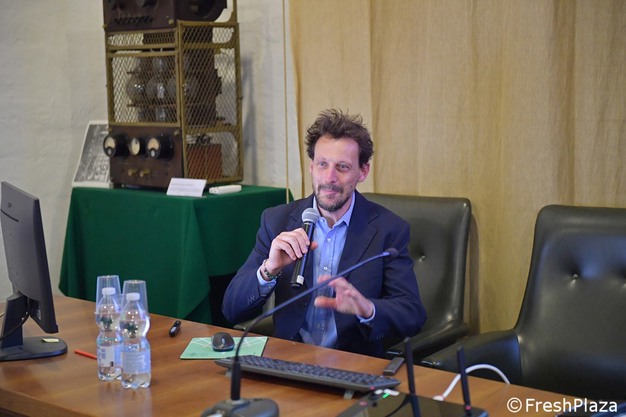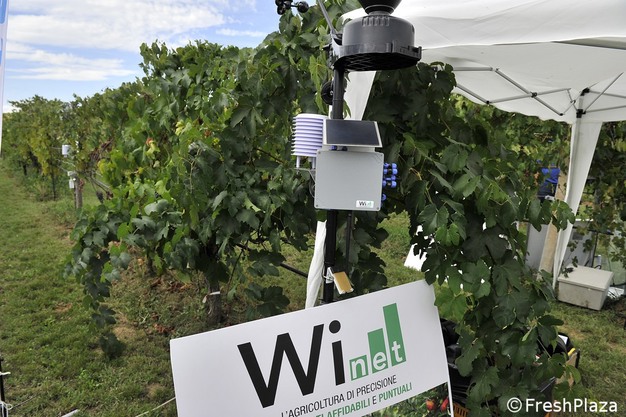"To obtain maximum yields and zero waste, it is necessary to have somewhat objective parameters. It is no longer time to irrigate based on intuition, relying on one's own experience or that of the neighbor." This is just one of the main points expressed by Emanuele Tavelli, head of Winet, a company founded in 2011 and based in Cesena (Forlì-Cesena). Tavelli was invited to speak at the conference "The Digital Revolution in Agriculture 4.0: Innovation and Opportunity", held on 23 May 2024 at Villa Griffone, in Sasso Marconi (Bologna), the villa of the inventor Guglielmo Marconi, where in 1895 the first wireless signal was transmitted, a precursor of Wi-Fi, to which all data collection, even in the field, is connected today.
 Emanuele Tavelli CEO of Winet.
Emanuele Tavelli CEO of Winet.
"Kiwi, apple, pear and industrial tomato are some of the crops where we are now using our proprietary sensors to control and manage agronomic practices such as irrigation," says Tavelli.
"We are involved in the design and implementation of wireless sensor networks (WSNs) primarily for environmental, industrial, and hydrogeological monitoring. Complementing the company's core business is a teaching and technology dissemination activity through training and specialization courses."
Wireless sensor networks are an important low-cost monitoring technology that can provide measurements with high temporal and spatial resolution. They consist of a set of nodes, each equipped with one or more sensors and/or actuators, which are able to exchange data over the radio medium according to well-defined communication protocols.
For example, the technology relies on sensors placed at various depths to measure temperature, humidity and conductivity every 10 centimeters, from 30 to 120 centimeters. Only by understanding where the roots really need water can you decide how to schedule irrigation.
"The parameters to evaluate," Tavelli continues, "are different. By cross-referencing all the data, we can send a notification to the farmers' smartphone telling them when to start watering, how much, for how long, and when to stop."

Minimally invasive due to the limited size of the nodes and the absence of any wiring, they allow rapid installation in contexts where complex network infrastructures are not feasible.
Founded in 2011 as a software development company on commercial WSN platforms, "Winet has gained experience over time on both the hardware and software front, filling several gaps currently present on the market. Thus, there has been a strong evolution from the initial business idea towards an integrated system concept that can solve the needs of potential customers interested in using a system with complete monitoring or its integration," he concludes.
For more information:
Winet
Via Luciano Lama, 120
47521 Cesena FC
Tel.: +39 0547 632982
Email: [email protected]
www.winetsrl.com
